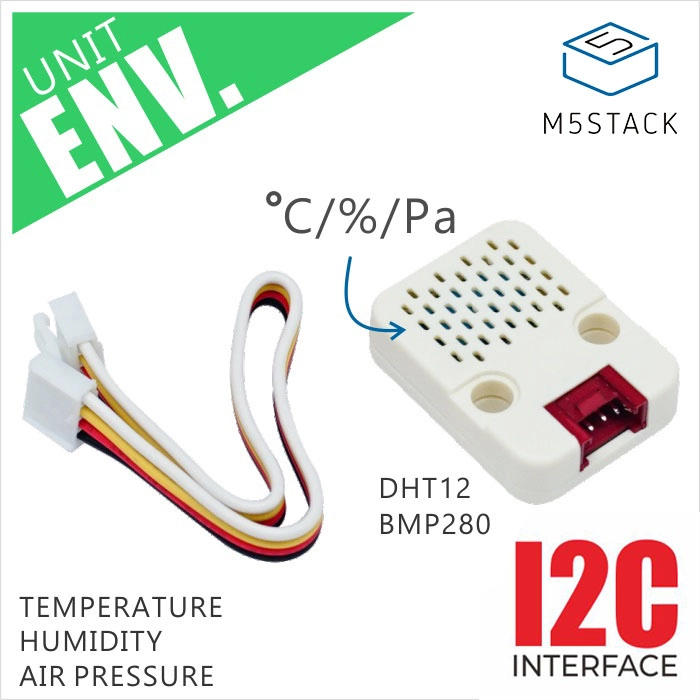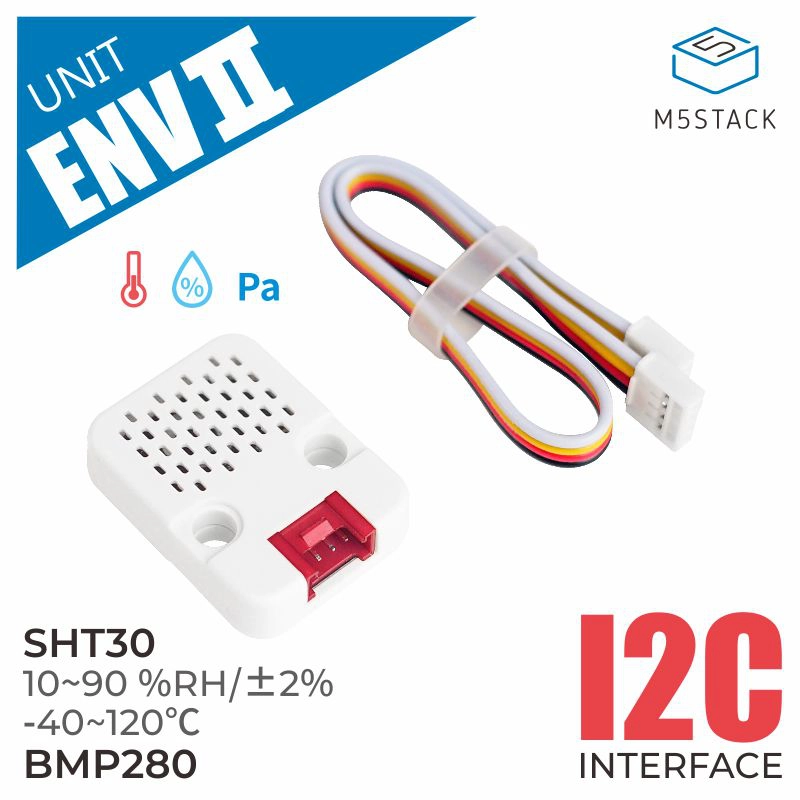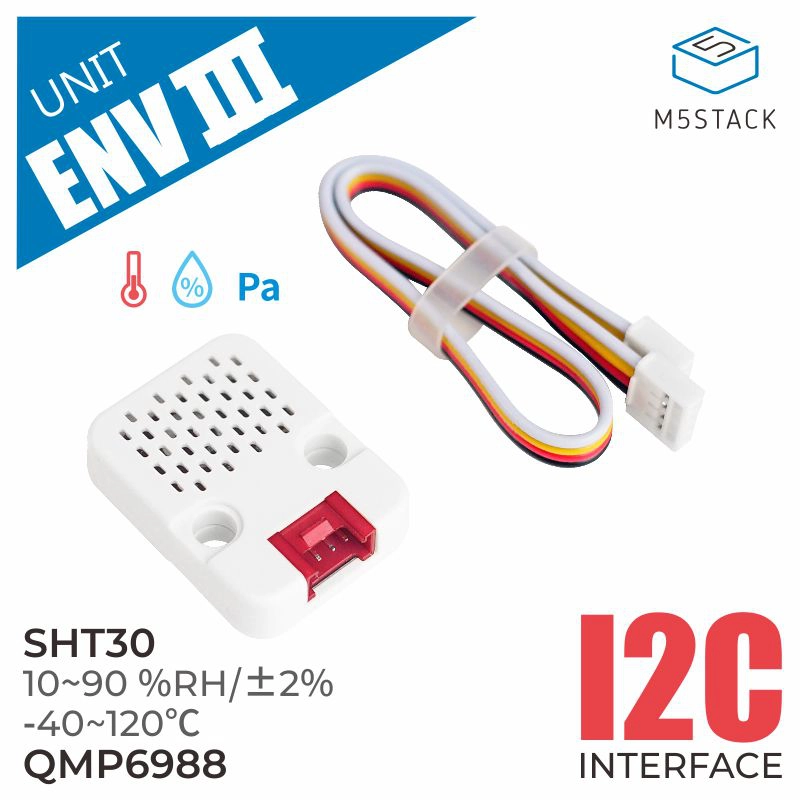ENV Unit
The following products are supported:
Micropython Example:
import M5
from M5 import *
from unit import *
M5.begin()
i2c0 = I2C(0, scl=Pin(1), sda=Pin(2), freq=100000)
env_0 = ENVUnit(i2c=i2c0, type=1) # ENVUnit
env2_0 = ENVUnit(i2c=i2c0, type=2) # ENVUnit II
env3_0 = ENVUnit(i2c=i2c0, type=3) # ENVUnit III
print(env_0.read_temperature())
print(env_0.read_humidity())
print(env_0.read_pressure())
UIFLOW2 Example:
class ENVUnit
Constructors
- class ENVUnit(i2c: I2C | PAHUBUnit, type: Literal[1, 2, 3])
Create an ENVUnit object.
parameter is:
i2cis an I2C object.typeis the type of ENVUnit1- ENV2- ENV II3- ENV III
UIFLOW2:
Methods
- ENVUnit.read_temperature()
This method allows to read the temperature value collected by ENV and returns a floating point value. The unit of measurement is °C.
UIFLOW2:
- ENVUnit.read_humidity()
This method allows to read the relative humidity value collected by ENV and returns a floating point value. The unit of measurement is %RH.
UIFLOW2:
- ENVUnit.read_pressure()
This method allows to read the atmospheric pressure collected by ENV and returns a floating point value. The unit of measurement is Pa.
UIFLOW2:







